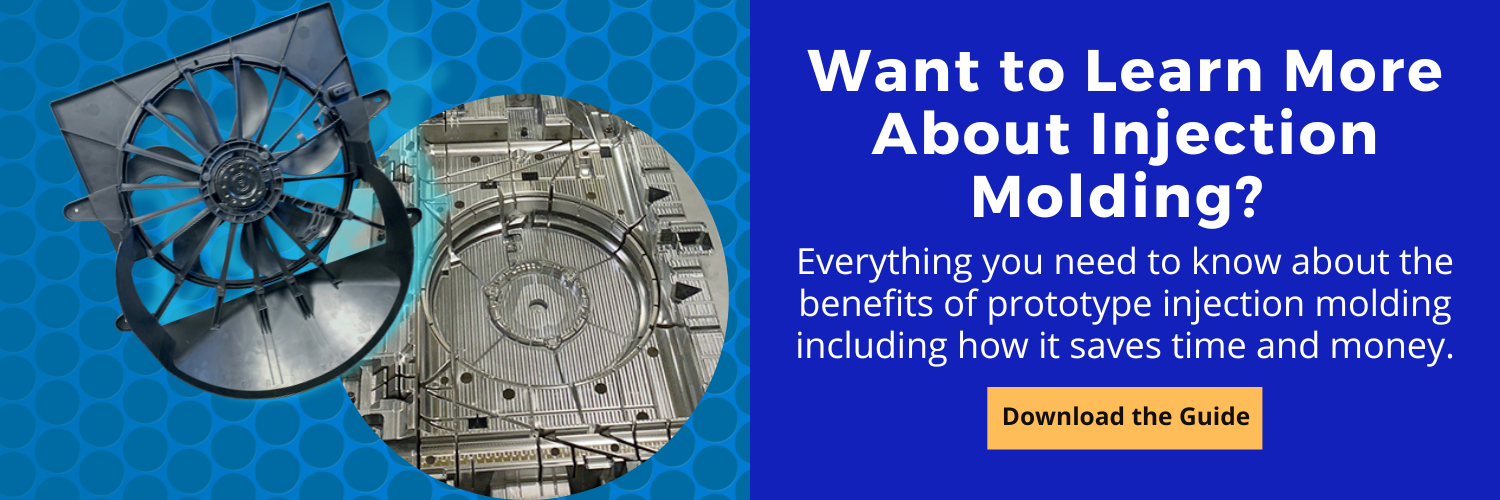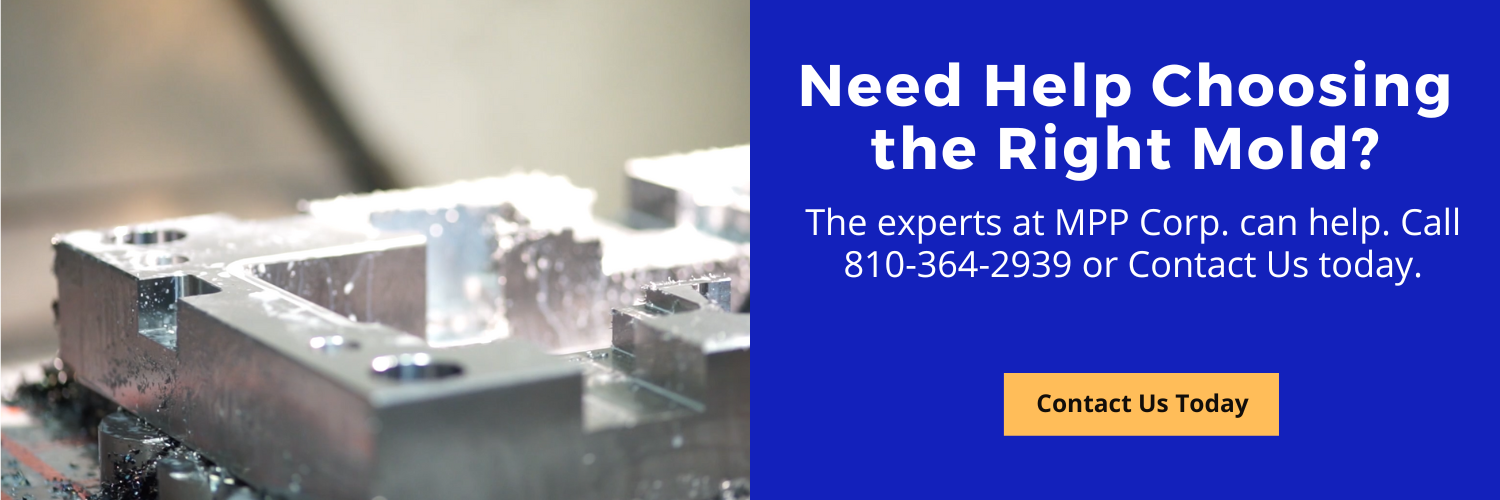You no doubt have wondered about the differences between different types of injection molds. Read on for a breakdown of the various injection mold classifications. Of course, if you have any further questions, don’t hesitate to reach out to us.
Injection Molds 101: Best in Class
This mold is built for extremely high production (cycles of one million or more). Because of this, it’s the highest-priced mold and is made with only the highest quality materials. It requires a detailed mold design and its base needs to be a minimum hardness of 28 R/C. The molding surfaces (cavities and cores) must be hardened to a minimum of 48 R/C range. Any other details (ie: sub-inserts, slides, heel blocks, etc) should also be of hardened tool steels.
Over the life of the mold, any build-up or corrosion in the vented cooling channels will decrease the cooling efficiency, thus degrading the part quality and increasing the cycle time. Because of this, it’s recommended that plates or inserts containing cooling channels be of a corrosive resistant material or be treated to prevent corrosion.
Other factors to consider:
- Ejection should be guided.
- Slides must have wear plates.
- Temperature control provisions should be in cavities, cores, and slide cores wherever possible.
- Parting line locks are required on all molds.
Injection Mold Grouping 102: Made for Medium to High Production
Class 102 is for medium to high production with cycles not exceeding one million. It’s a high-quality, fairly high-priced mold that’s good for abrasive materials and/or parts requiring close tolerances. It requires a detailed mold design. The mold base needs a minimum hardness of 28 R/C and molding surfaces should be hardened to a 48 R/C range. All other functional details should be made and heat treated. Temperature control provisions should be directly in the cavities, cores, and slide cores wherever possible. Note that parting line locks are recommended for all molds.
While the following items may or may not be required depending on the quantities needed, they’re recommended for quoting purposes:
- Guided ejection
- Slide wear plates
- Corrosive-resistant temperature control channels
- Plated cavities
Got a Run Under a Million? Injection Molds 103 Are What You Want.
Good for cycles under half a million, this is a very popular mold for low to medium productions in the most common price range. A detailed mold design is recommended and the mold base must be a minimum hardness of 8 R/C with cavity and cores 28 R/C or higher. All other extras are optional.
Go Low with Injection Mold Classification 104
Class 104 is a low-production mold (under 100,000). It’s used only for limited production, preferably with non-abrasive materials. It’s in the low to moderate price range. It’s recommended to have a mold design and its base can be of mild steel or aluminum. Any cavities can be of aluminum, mild steel or any other agreed upon metal.
Mold Class 105: Perfect for Cycles Below 500
This mold is for prototypes only with cycles not exceeding 500. It’s constructed in the least expensive manner possible from cast metal, epoxy, or any other material offering sufficient strength to produce minimum prototype pieces.
Still not sure what mold class is right for your project? Contact us and we’ll find the right mold for you.



